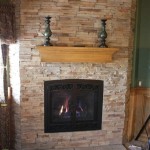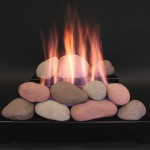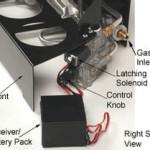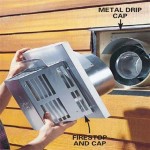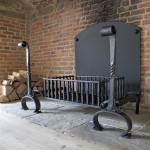Open Fireplace Ideas: A Contemporary Approach
The allure of an open fireplace has persisted throughout history, evolving from a fundamental source of warmth and cooking to a captivating architectural feature. Modern design embraces this historical element while incorporating contemporary aesthetics and technological advancements. The open fireplace, redefined, delivers both visual appeal and functional heating, serving as a focal point in modern living spaces.
The integration of an open fireplace into a modern home requires careful consideration. Factors such as room size, existing architectural style, and desired level of heating efficiency play crucial roles in determining the optimal design. Materials, ranging from sleek stainless steel to rustic stone, contribute significantly to the overall ambiance. Furthermore, adherence to local building codes and safety regulations is paramount to ensure the safe and efficient operation of the fireplace.
Selecting the appropriate fuel source is another critical aspect of modern open fireplace design. While traditional wood-burning fireplaces retain their romantic charm, gas and ethanol alternatives offer convenience and reduced emissions. The choice depends on individual preferences, environmental concerns, and the practicality of fuel storage and handling.
Material Selection and Architectural Integration
The selection of materials for a modern open fireplace profoundly impacts its aesthetic appeal and its integration into the surrounding environment. The material needs to harmonize with the architectural style of the home. For instance, a minimalist, concrete fireplace surround complements a contemporary loft, while a reclaimed brick fireplace surround enhances the rustic charm of a farmhouse-style living room.
Concrete is a popular choice for modern fireplace designs due to its versatility and ability to be molded into various shapes and textures. It can be cast in place or pre-fabricated, and its neutral color palette allows it to blend seamlessly with diverse interior design schemes. The industrial aesthetic of concrete lends itself well to modern and minimalist spaces.
Steel, particularly stainless steel, offers a sleek and contemporary look for open fireplaces. Its durability and resistance to heat make it a practical choice for the firebox and surround. Steel can be brushed, polished, or powder-coated to achieve a variety of finishes, allowing for customization to match the overall design.
Stone, both natural and manufactured, provides a textured and organic element to modern open fireplaces. Locally sourced stone adds a regional character to the design, while manufactured stone offers a wider range of colors and patterns. Stone can be used to create a rustic, traditional, or even modern aesthetic, depending on the type of stone and the way it's incorporated into the design. Larger format stone slabs are particularly popular as they create a cleaner, more modern look.
Glass is increasingly being used in open fireplace designs, adding a sense of transparency and lightness. Glass fire screens protect the surrounding area from sparks and embers while allowing for an unobstructed view of the flames. Glass can also be used to create visually striking fireplace surrounds, particularly when combined with backlighting.
Fireclay brick, a more refined version of traditional brick, offers a less rustic but still warm texture that is suitable for modern spaces. It's more resistant to high heat and can be chosen in a variety of sleek colors. Many modern open fireplaces use fireclay brick on the interior of the firebox to reflect heat and create a more efficient burn.
Fuel Options and Environmental Considerations
The choice of fuel source for an open fireplace significantly impacts its environmental footprint and operational convenience. While traditional wood-burning fireplaces offer a nostalgic appeal, they produce more emissions compared to gas and ethanol alternatives. Modern regulations often restrict or discourage the use of wood-burning fireplaces in urban areas due to air quality concerns.
Natural gas fireplaces offer a convenient and relatively clean-burning alternative to wood. They can be easily connected to existing gas lines, eliminating the need for fuel storage. Gas fireplaces produce less particulate matter and carbon monoxide compared to wood-burning fireplaces, making them a more environmentally friendly option. Modern models also offer features such as remote control operation and adjustable flame height.
Propane fireplaces are similar to natural gas fireplaces but rely on propane tanks for fuel. They are a suitable option for homes without access to natural gas lines. Propane fireplaces offer the same convenience and reduced emissions as natural gas fireplaces.
Ethanol fireplaces have gained popularity in recent years due to their ease of installation and clean-burning nature. They do not require a chimney or flue, making them suitable for apartments and other spaces where traditional fireplaces are not feasible. Ethanol fireplaces burn liquid bio-ethanol, a renewable fuel source derived from plants. While they produce minimal emissions, they also generate less heat compared to wood or gas fireplaces.
Electric fireplaces offer a visual representation of a flame without actually burning any fuel. They are a convenient and energy-efficient option for adding ambiance to a room. Electric fireplaces do not produce any emissions, making them the most environmentally friendly choice. However, they primarily serve as a decorative element and do not provide significant heat.
When considering environmental impact, it is important to source fuel responsibly. If opting for a wood-burning fireplace, choose sustainably harvested wood from certified forests. Using seasoned wood minimizes emissions and improves burning efficiency. Regular maintenance of the fireplace and chimney also contributes to cleaner burning.
Safety and Functional Design Elements
Safety is paramount in the design and operation of an open fireplace. Proper ventilation, adequate clearance from combustible materials, and the use of appropriate safety screens are essential to prevent fires and injuries. Local building codes often specify minimum clearances and other safety requirements that must be followed.
A properly sized chimney or flue is crucial for ensuring adequate ventilation and preventing the buildup of dangerous gases. The chimney should be inspected and cleaned regularly to remove creosote and other debris that can obstruct airflow. Carbon monoxide detectors should be installed in the home to provide early warning of any potential carbon monoxide leaks.
The fireplace surround should be constructed of non-combustible materials, such as stone, brick, or steel. Combustible materials, such as wood paneling or furniture, should be kept a safe distance from the fireplace opening. A fire screen or mesh curtain should be used to prevent sparks and embers from escaping the fireplace and igniting nearby materials.
Consideration should be given to the placement of the fireplace within the room. It should be located in a central location where it can be easily enjoyed by occupants. Avoid placing the fireplace near doorways or walkways where it could create a fire hazard. Adequate seating should be provided around the fireplace to create a comfortable and inviting atmosphere.
Modern fireplace designs often incorporate integrated storage for wood or other fuel sources. This helps to keep the area around the fireplace tidy and organized. Storage can be incorporated into the fireplace surround or built into nearby shelving units. Consider the ergonomics of fuel storage and retrieval to ensure ease of use.
Smart home technology can be integrated into modern open fireplace designs to enhance convenience and safety. Remote control operation allows for easy adjustment of flame height and temperature. Smart thermostats can be used to regulate the temperature of the room and prevent overheating. Sensors can detect smoke or carbon monoxide leaks and automatically shut off the fireplace.
Proper design of the firebox itself is also critical. The firebox needs to be sized appropriately for the size of the room and the desired level of heat output. The firebox should be constructed of durable materials that can withstand high temperatures. The shape and design of the firebox can also influence the efficiency of the fireplace. Considerations include the back wall angle, throat size, and smoke shelf design.
Ambient lighting plays a significant role in enhancing the atmosphere around a modern open fireplace. Recessed lighting, spotlights, or wall sconces can be used to highlight the fireplace and create a warm and inviting glow. Dimmable lighting allows for adjusting the ambiance to suit different moods and occasions. Avoid placing lighting fixtures directly above the fireplace, as this can create glare and distract from the flames.

A Modern Fireplace As Centrepiece For The Home Modus Fireplaces

Contemporary Fireplace Surrounds And Mantels Ideas Direct Fireplaces

ᑕ❶ᑐ Modern Fireplace Ideas What Is Next

50 Fireplace Ideas For A Warm And Cozy Home In 2025

Modern Fireplace Design Ideas For A Cozy Space

10 Best Modern Fireplace Mantel Decor Ideas Decorilla Interior Design

70 Fireplace Ideas That Will Bring Spark To Your Space In 2025

The Design Elements Of Modern Fireplaces

5 Modern Vs Contemporary Interior Design Fireplace Ideas

66 Modern Built In Fireplaces To Bring A Cozy Touch Digsdigs



